While the Cité du Vitrail is getting ready to open its doors in Troyes, the department of Aube (France) invites you to follow the ‘Route du Vitrail’. A luminous itinerary that will certainly make you realize that the art of stained glass is anything but a dead art!
Several craftsmen and master glassworkers are reinventing this age-old art and pushing back the limits of it ever further, by bringing a touch of modernity to it.
What is the Stained Glass Route? What can we see? What are the essential stops? Discover in this travel guide how to prepare your stay in Aube, on the theme of stained glass.
This travel guide has been produced in collaboration with Aube en Champagne and Explore Grand Est. However, I reserve the right to make my own comments. The opinions and suggestions for activities mentioned in this article are therefore entirely sincere.
Summary
The Stained Glass Route in short

- When to go there ? Preferably between spring and autumn. Stained glass windows are even more beautiful when they are bathed in light. It is therefore preferable to go on a sunny day.
- How to get there? The gateway to the Aube is the city of Troyes, which you can easily reach by train. For Parisians, it is also possible to start the trip from Nogent-sur-Seine (1 hour by train from Paris). On the other hand, a car will be almost indispensable to go to the different places, sometimes located in areas not served by public transport.
- How much does it cost? Almost all of the buildings listed on the stained glass route are public buildings open free of charge. So your visits shouldn’t break the bank!
Why a Stained Glass Route in Aube ?!
Aube is the department in Europe with the largest number of stained glass windows: 9,000 m2 before the Revolution, not counting more recent stained glass windows and contemporary creations!
This unique heritage is celebrated at the end of this year by the opening of the Cité du Vitrail, in Troyes, but it was also important for the department to encourage visitors to discover the stained glass windows scattered throughout the department. The Route du Vitrail is therefore intended to “highlight” some 65 civil or religious buildings that are particularly remarkable for their history, aesthetics, technique or state of preservation.
How to visit the Stained Glass Route?
A web-app accessible for free from any smartphone allows you to consult the list of these buildings. Then, you just have to consult one of them to discover its history and its opening hours before going to admire it in “real”.
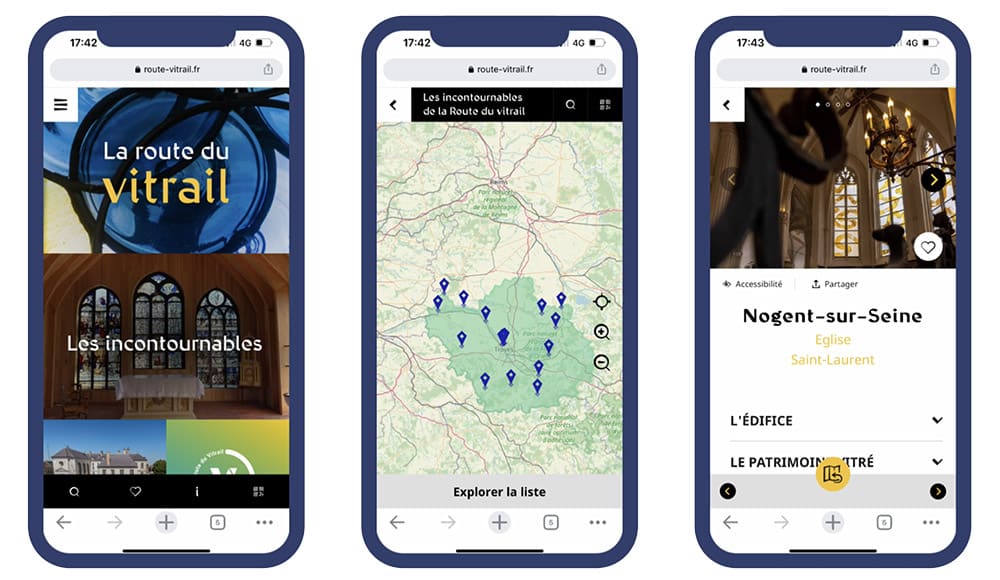
Very well designed, this web-app will be your pocket guide to help you find each building, and then learn about the history and meaning of the stained glass windows you can see.
7 must-see buildings on the Stained Glass Route
With 65 buildings listed, it is difficult to present you with an exhaustive panorama of all the stained glass windows to discover, but here are 7 visits that are particularly unmissable!
The Saint-Laurent church of Nogent-sur-Seine
Recently restored, this church has remarkable contemporary stained glass windows. They are the work of the artist Fabienne Verdier who designed them with the glass-maker Flavie Vincent-Petit.

If these stained glass windows seem simple, it took a lot of research to obtain this impression of lightning and spontaneity in this yellow ribbon that runs through the panels like a divine breath circulating from bay to bay.
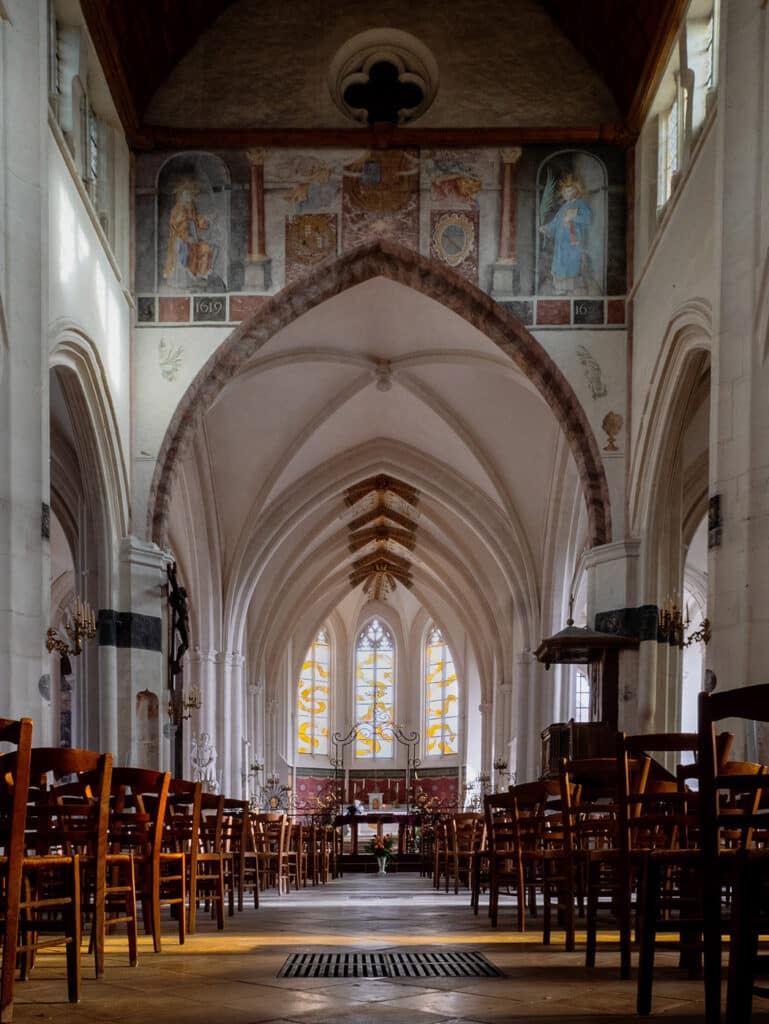

The glass master Flavie Vincent-Petit also makes her own creations. One of them is in the church and shows that stained glass is a living work! With its floral representation, the play of light gives the impression that the drawing is moving, a marvel!
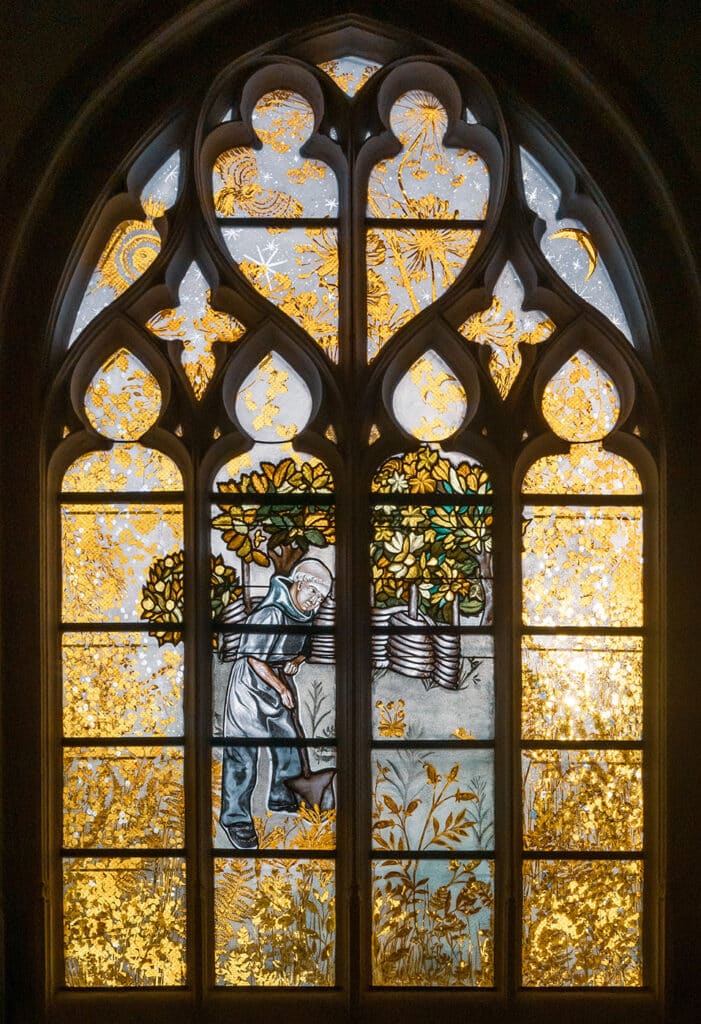
To see next to the Saint-Laurent church: the Camille Claudel museum
A few steps away from the church, the Camille Claudel museum welcomes another stained glass window made by Fabienne Verdier, inspired by the sculpture “La valse” by Camille Claudel.
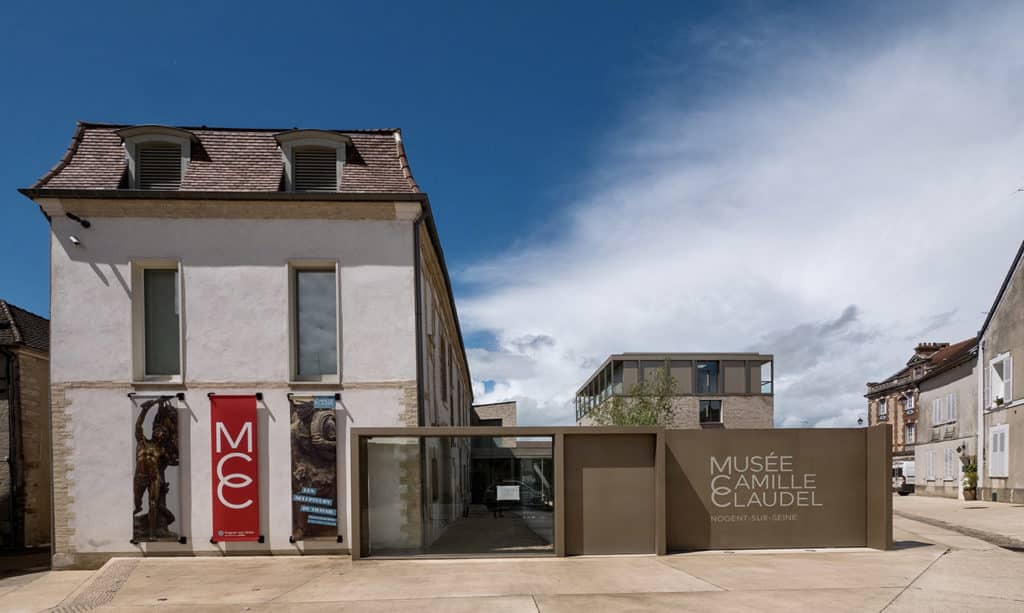
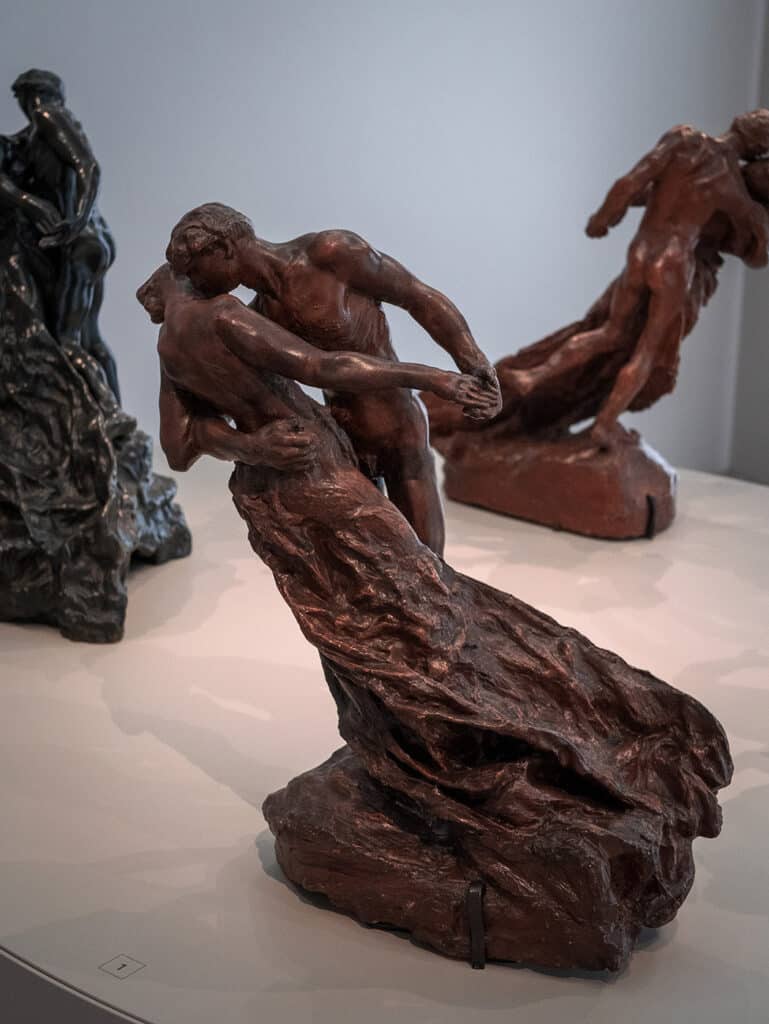
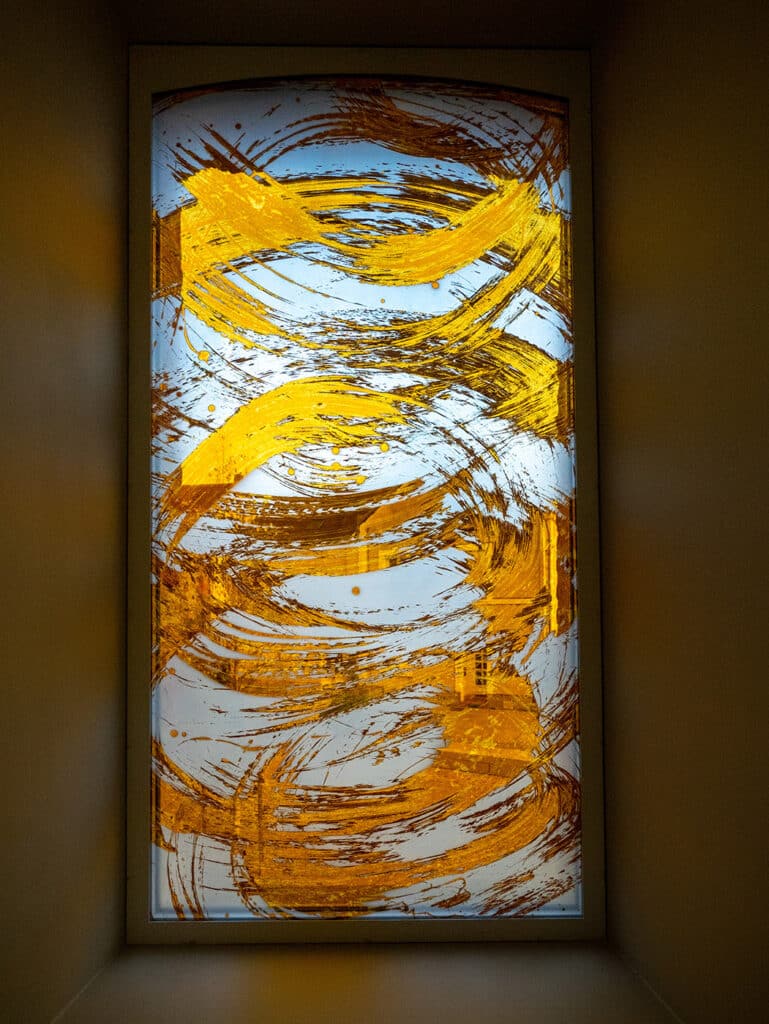
The Saint-Pierre Saint-Paul church of Villenauxe-La-Grande
Like many other buildings in the department, the church of Villenauxe-la-Grande suffered from the bombings of the Second World War which destroyed its stained glass windows. Replaced by simple white glass at the end of the conflict, it is only in the 1990’s that a project of creation of contemporary stained glasses was born.
A resident of the village bequeathed to the city a considerable amount of money to create a new stained glass window. The project generated a lot of enthusiasm and other sources of financing were found, making it possible to change the entire 200m2 of stained glass windows! An international competition was launched, imposing 3 themes on the artists:
- The 4 elements (water, fire, air and earth)
- Ceramics and vineyards, which are two important activities in Villenauxe
- Religious subjects
In the end, the project of the English artist David Tremlett, associated with the Simon Marq workshop in Rheims, was chosen and you can now see it in the church.
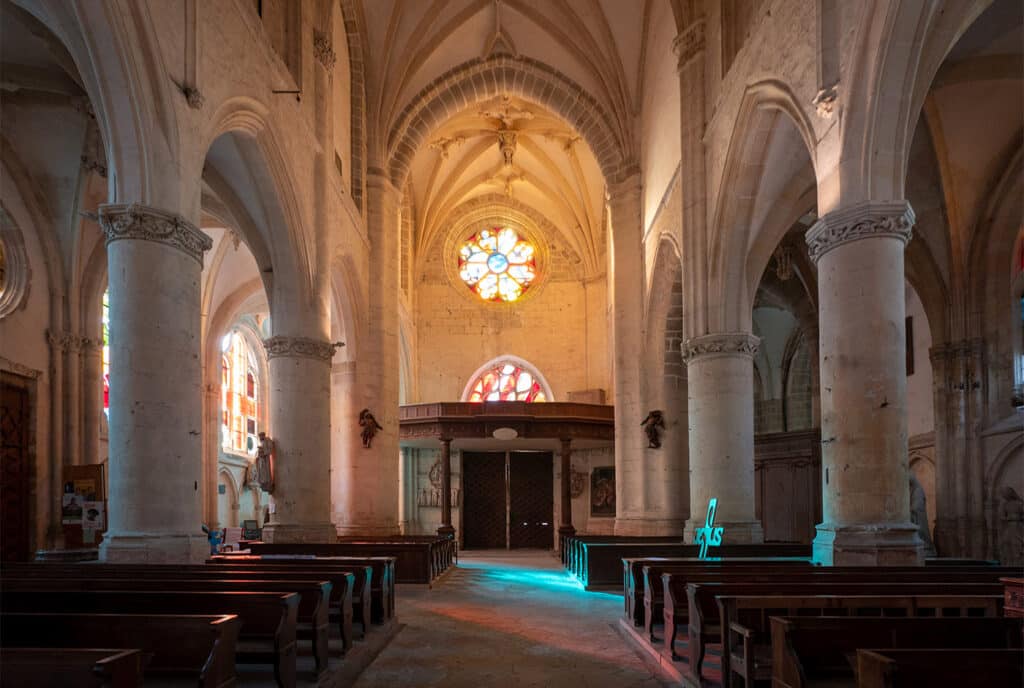
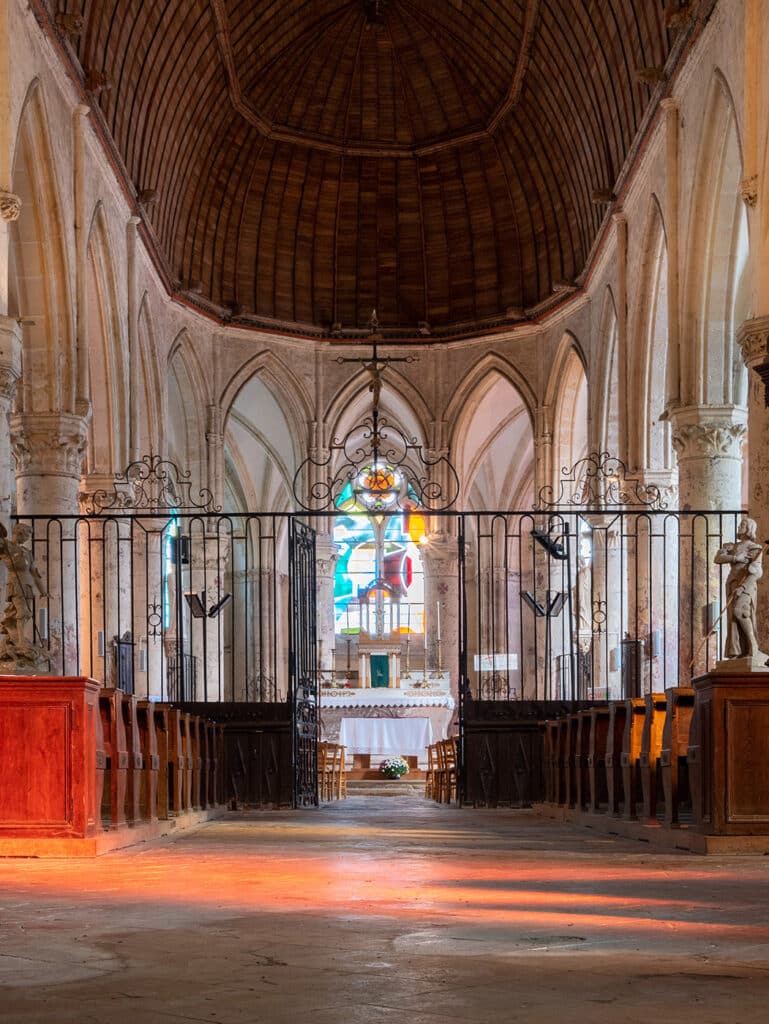

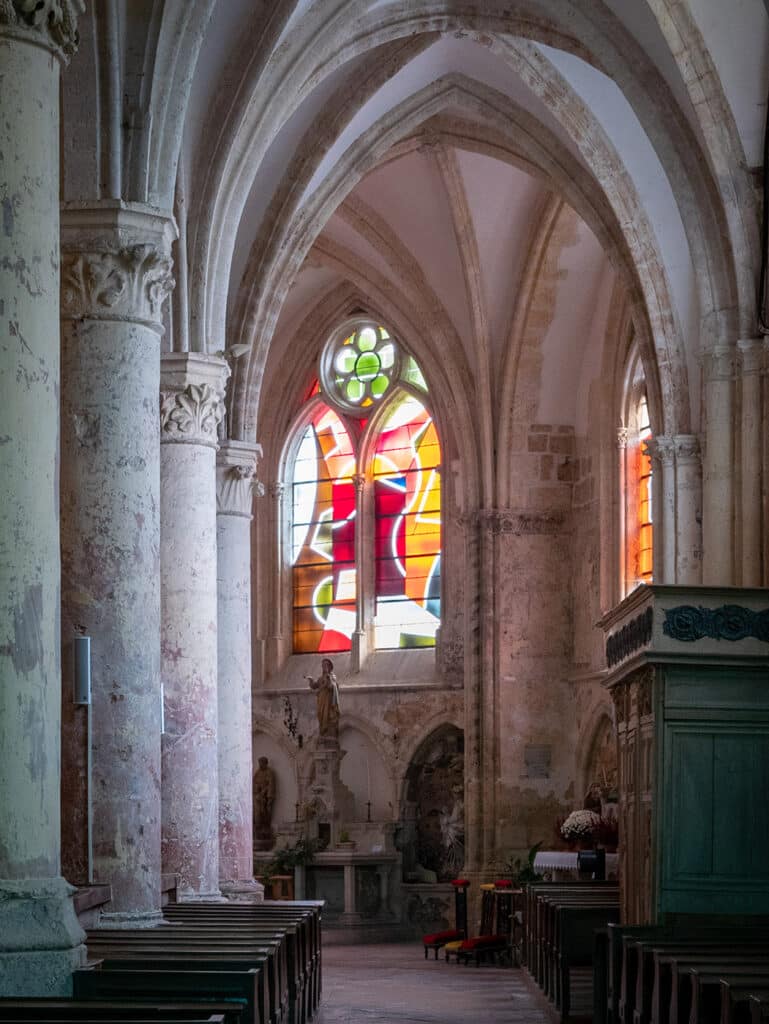
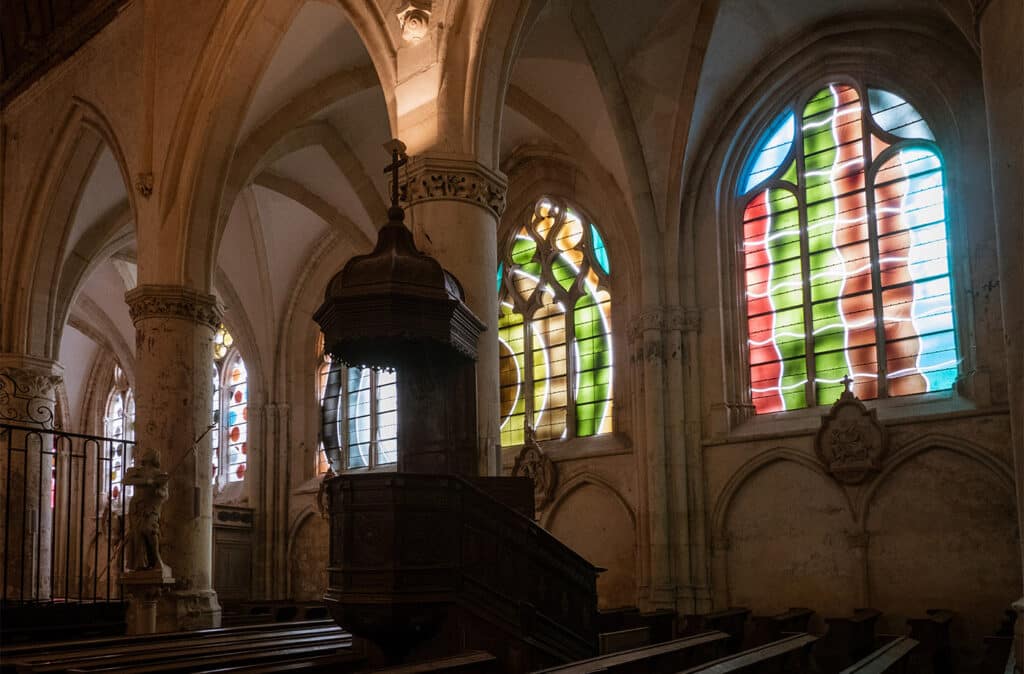
The church of Saint-Martin in Romilly-sur-Seine
This church is another example of a project initiated by individuals. Here, it is an association of local residents who have mobilized to raise funds and finance the creation of 14 contemporary stained glass windows.
The project, imagined by the master glass artist Joël Mône, is particularly original: each bay is created with a color of the rainbow. By blending in the center of the church, the rays of light form a white light.
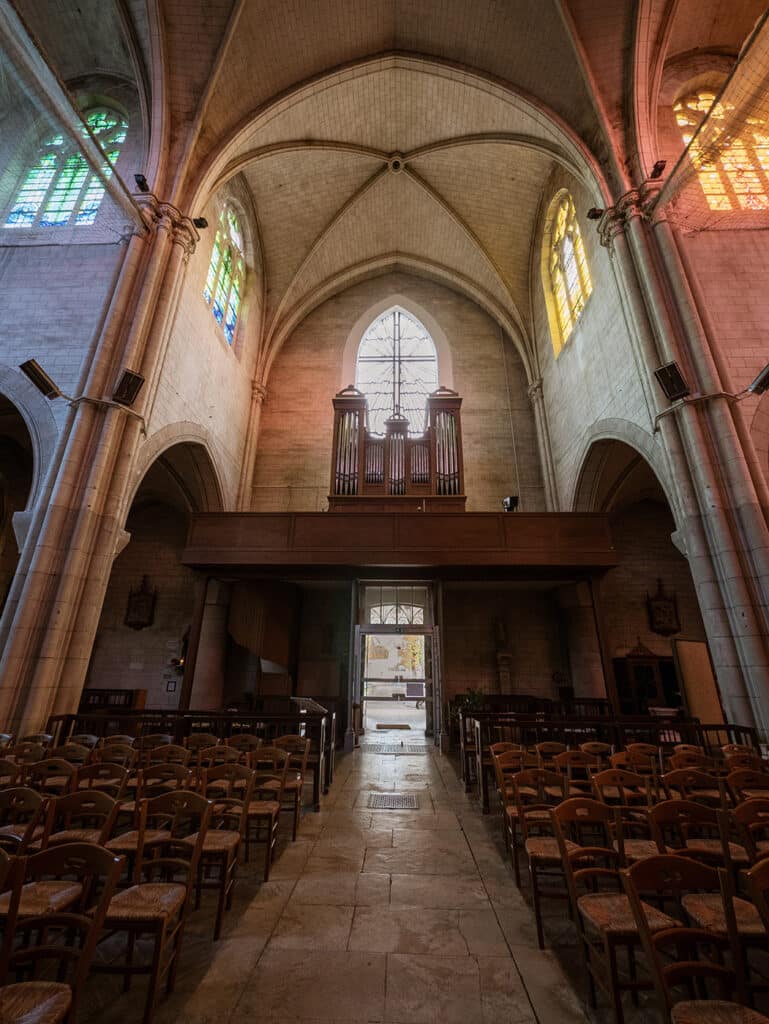

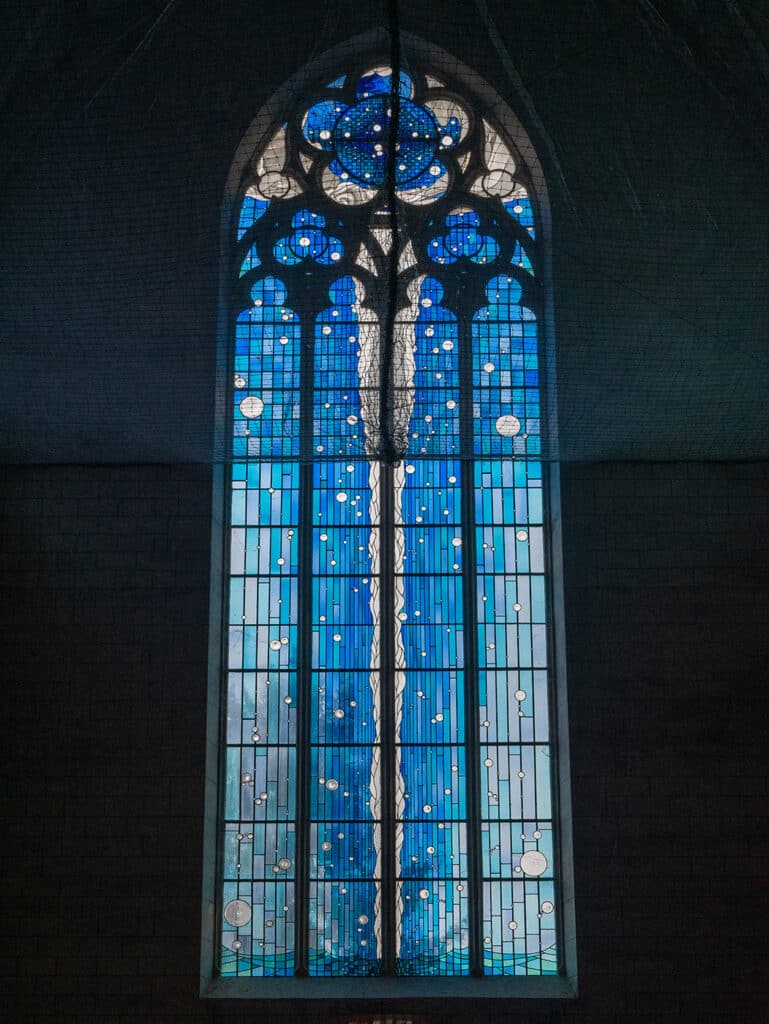
The church of Eaux-Puiseaux
This small church did not suffer the horrors of war but did not manage to escape the violent storm of 1999 which destroyed the original stained glass windows. A project of creation of contemporary stained glasses was then entrusted to the master glassmaker Flavie Vincent-Petit.
In the choir, 5 bays evoke the creation of the world, with circles symbolizing the birth of the universe, of the sun, then of the planets.

On the sides of the nave, the stained glass windows were designed in consultation with the inhabitants of the village. The windows are a tribute to the fauna and flora of Eaux-Puiseaux.
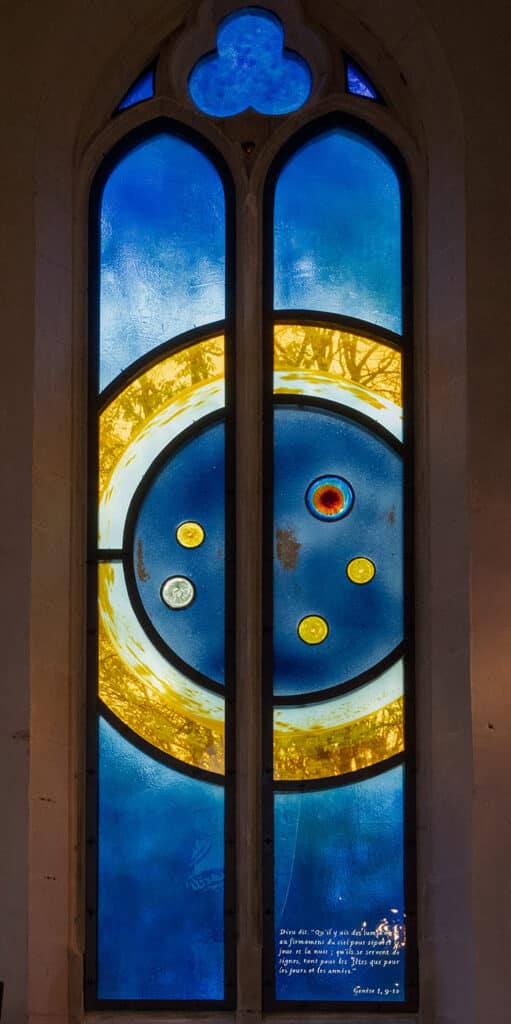
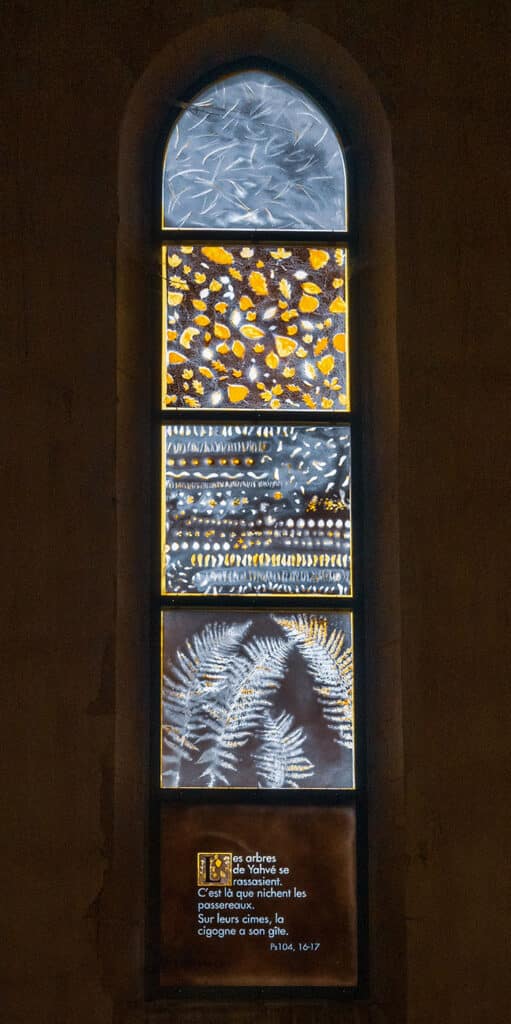
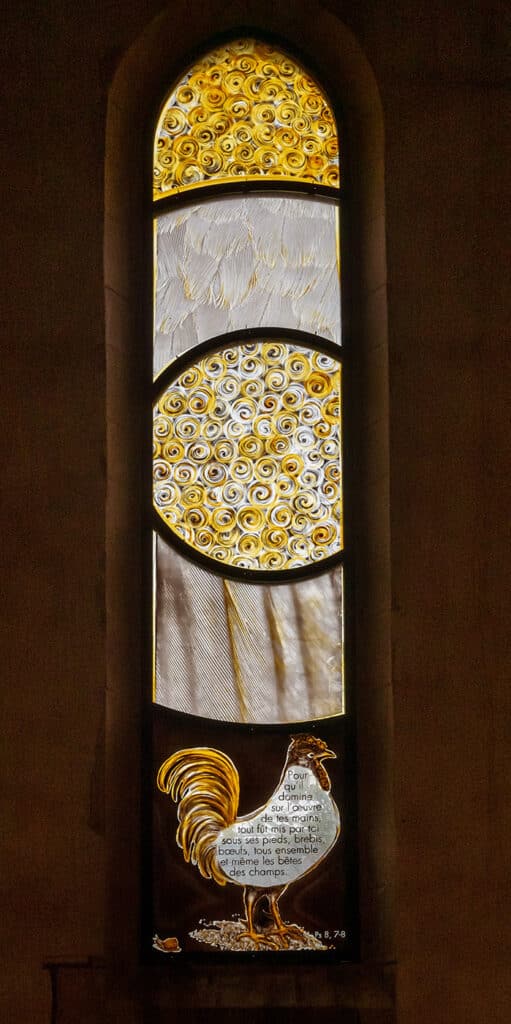
The church of Saint Pierre-ès-Liens in Ervy-le-Châtel
In this church, contemporary stained glass windows cohabit with ancient ones. Three of them, from the 16th century, are classified as Historic Monuments: the Martyrdom of Saint Christine de Bolsène, the Sybils and the Triumphs of Petrarch. The latter, recently restored, is a little jewel.
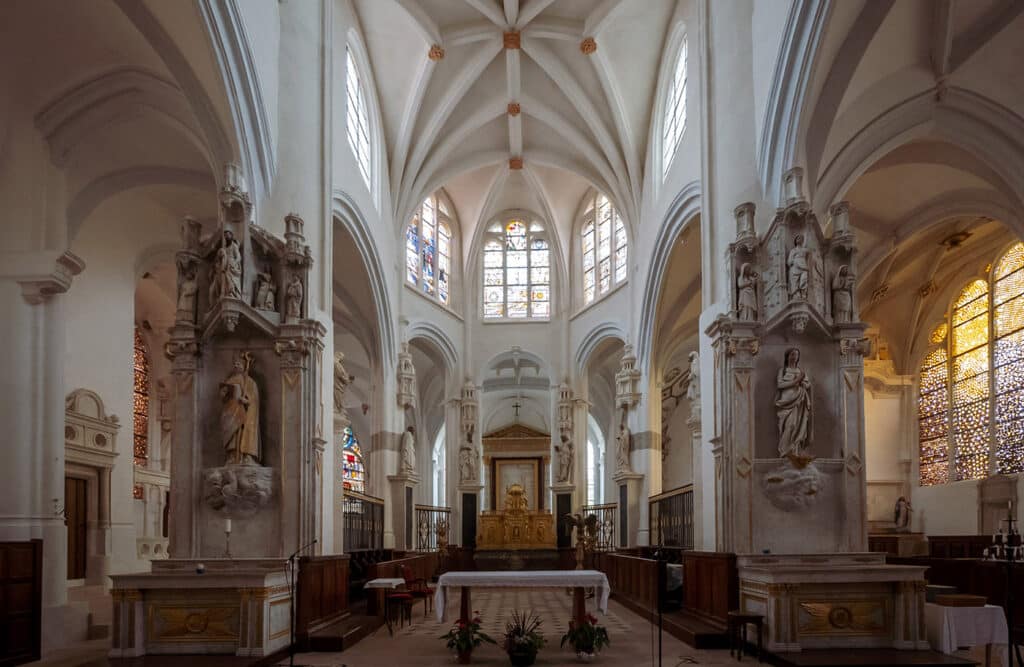
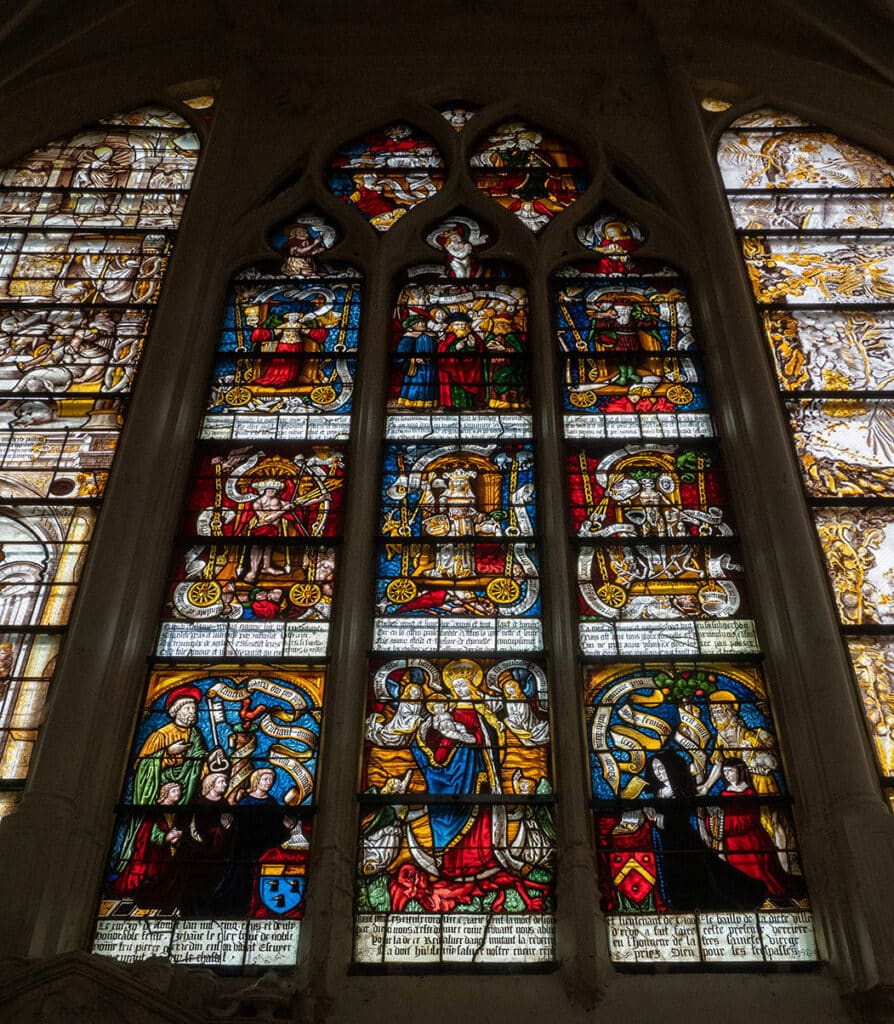
On the other bays, where the original stained glass windows were damaged, contemporary creations of Flavie Vincent-Petit come to dialogue with those of the 16th century.
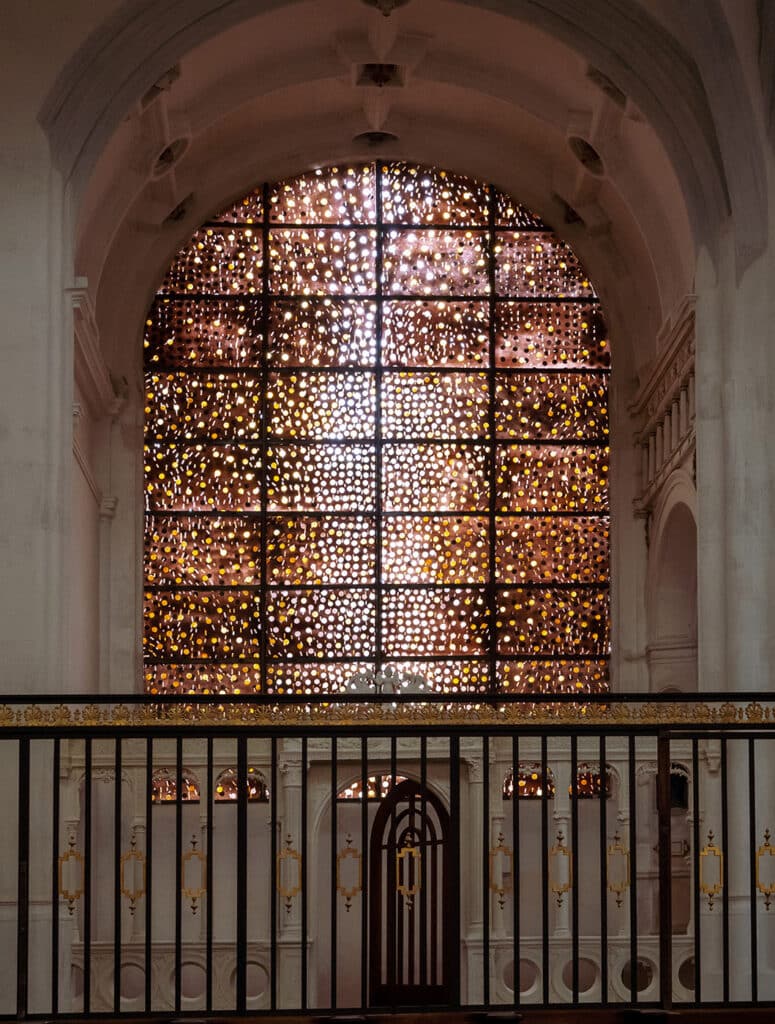
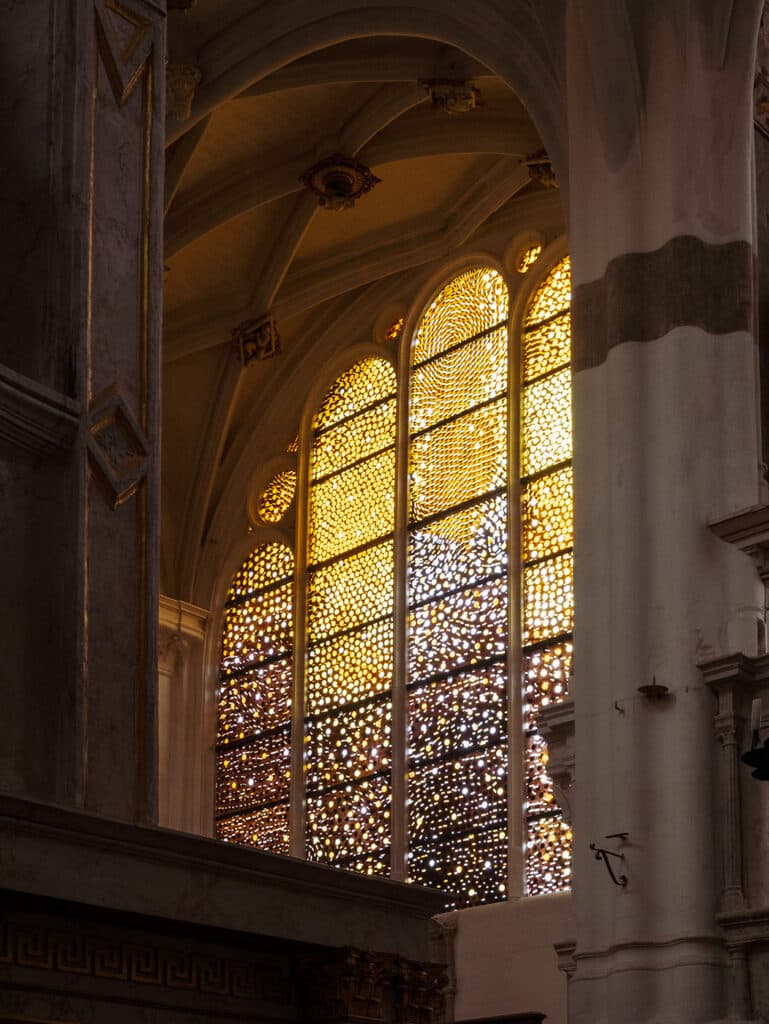

The cathedral of Troyes
Of the 9,000 m2 of classified stained glass in Aube, half comes from Troyes and 1,500 m2 in the cathedral alone!
Here, it is a great history of the art of stained glass that is to be discovered. The oldest stained glass window dates from the 12th century but there are also some from the 13th century and others from after the 14th century recognizable by the use of silver yellow.


What is silver yellow?
Discovered in the 14th century, silver yellow was a real revolution in the art of stained glass. Until then, in order to have different colors on a stained glass window, it was necessary to separate different pieces of glass tinted in the mass by a lead. Silver yellow allowed the addition of yellow color on an already tinted piece and thus improved the aesthetics and styles of painting on glass. It allowed to color hair, crowns, architectural elements…
You can also admire stained glass windows from the 18th century with less religious designs but with coats of arms, at a time when rich families had stained glass made.
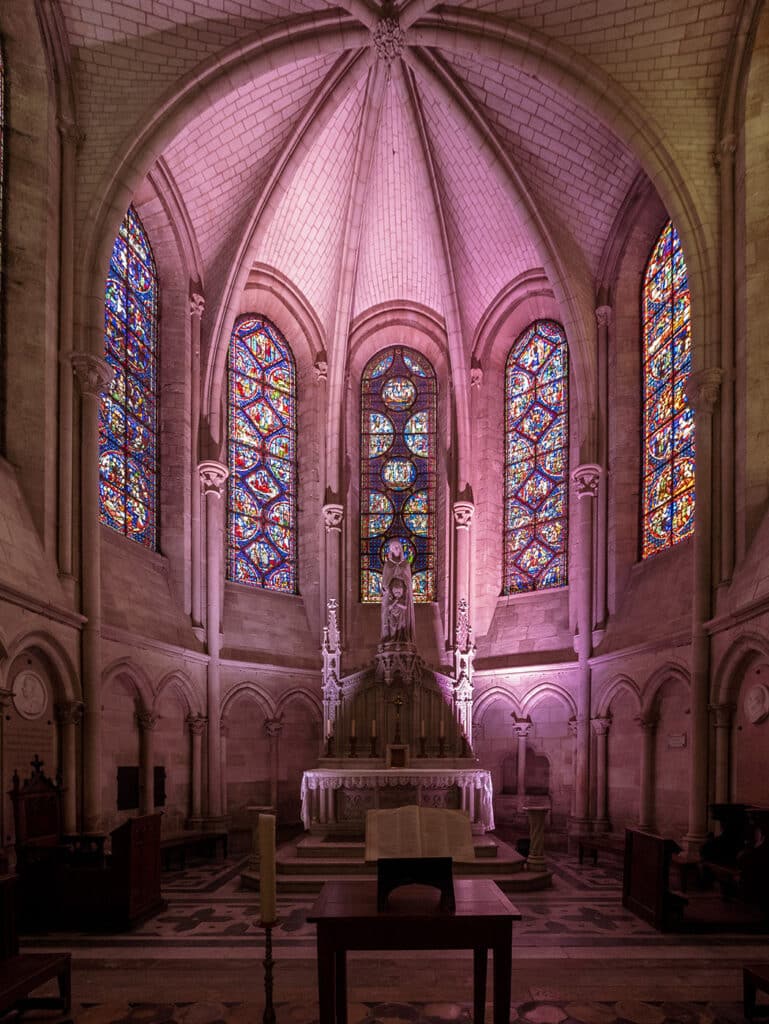
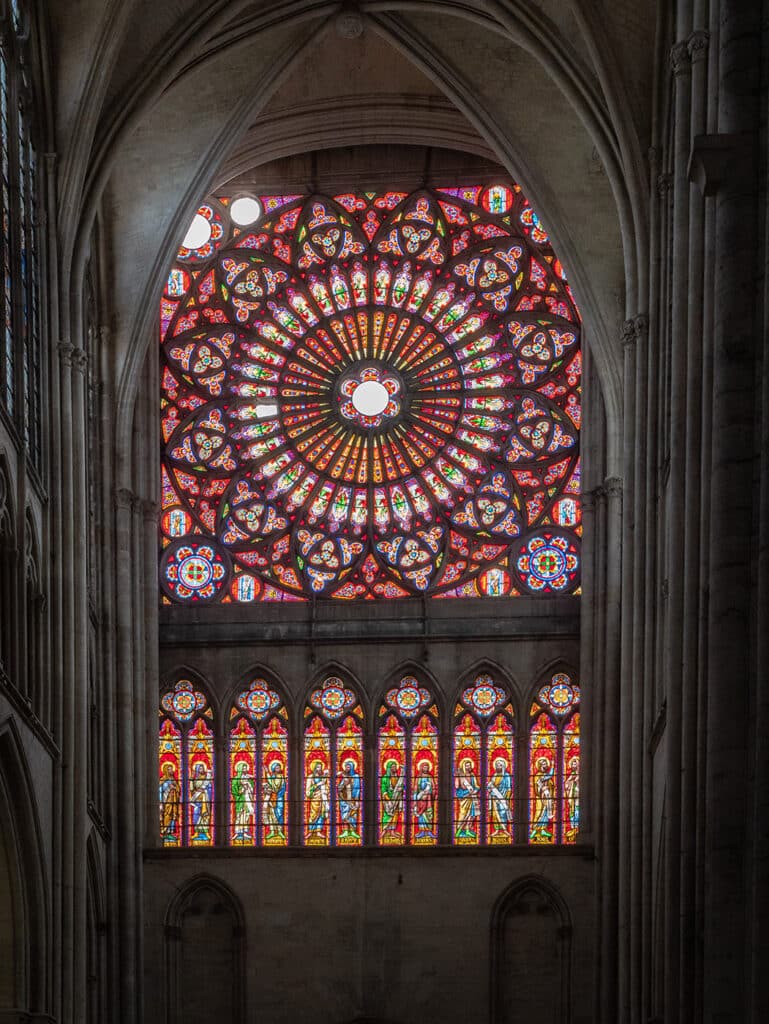
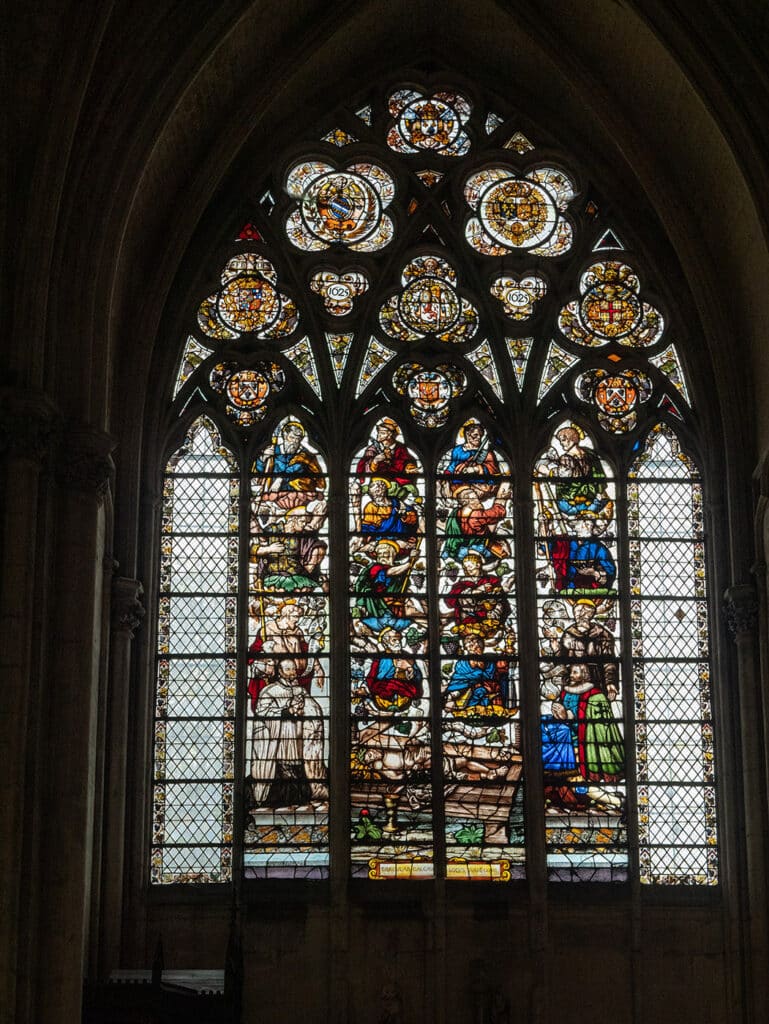
Take the opportunity to visit the city of 10 steeples
Discover the city of Troyes and push the doors of its numerous churches which gave it the nickname of “city of 10 steeples”. Stroll in the heart of the city to admire the half-timbered houses that give Troyes a unique charm!


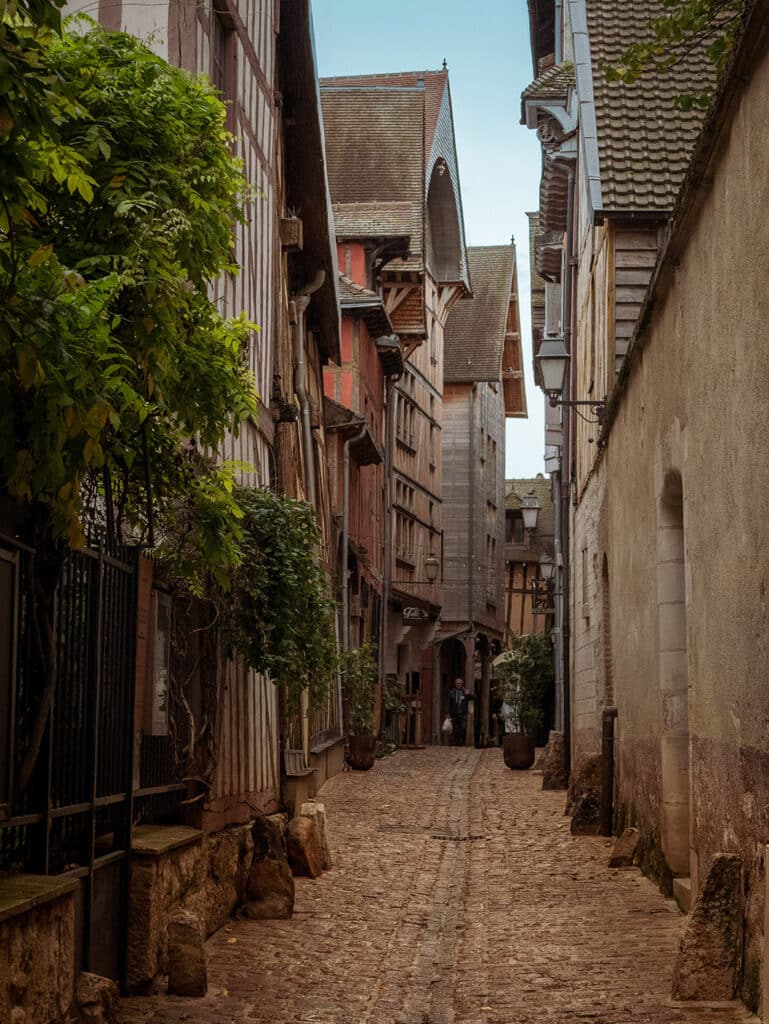

The Saint-Jean-Baptiste church of Chaource
This church deserves to be discovered for its stained glass windows with notably a stained glass window on the last judgement set between mullions forming a fleur de lys.

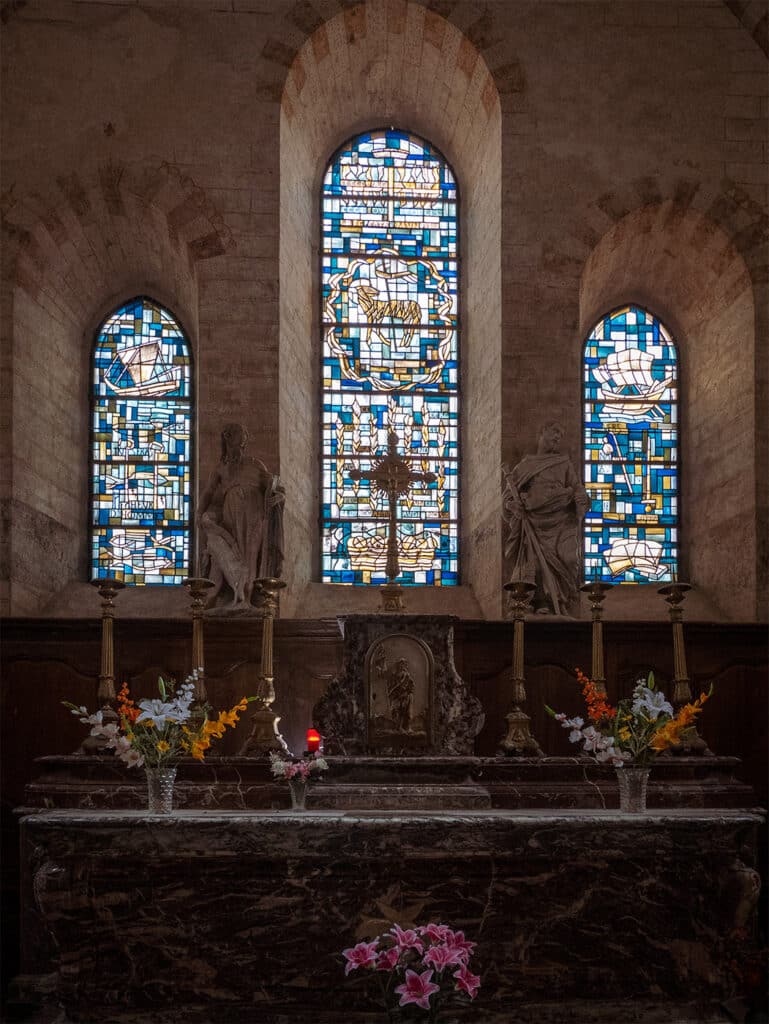
But it is especially the Chapel of the Sepulchre, which one must go to admire! This chapel built in the 16th century below the choir houses an impressive sculpture representing the burial of Christ; it is considered one of the most beautiful in Europe.
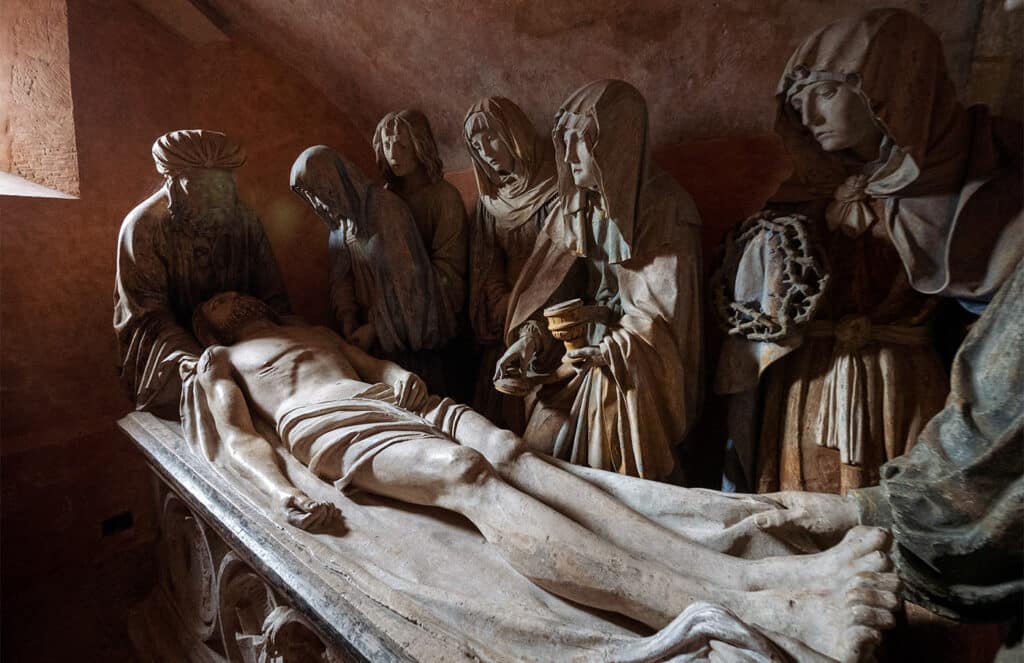
The City of Stained Glass
In the heart of Troyes, on the site of the former Hôtel Dieu, the Cité du Vitrail will open its doors on December 17, 2022.
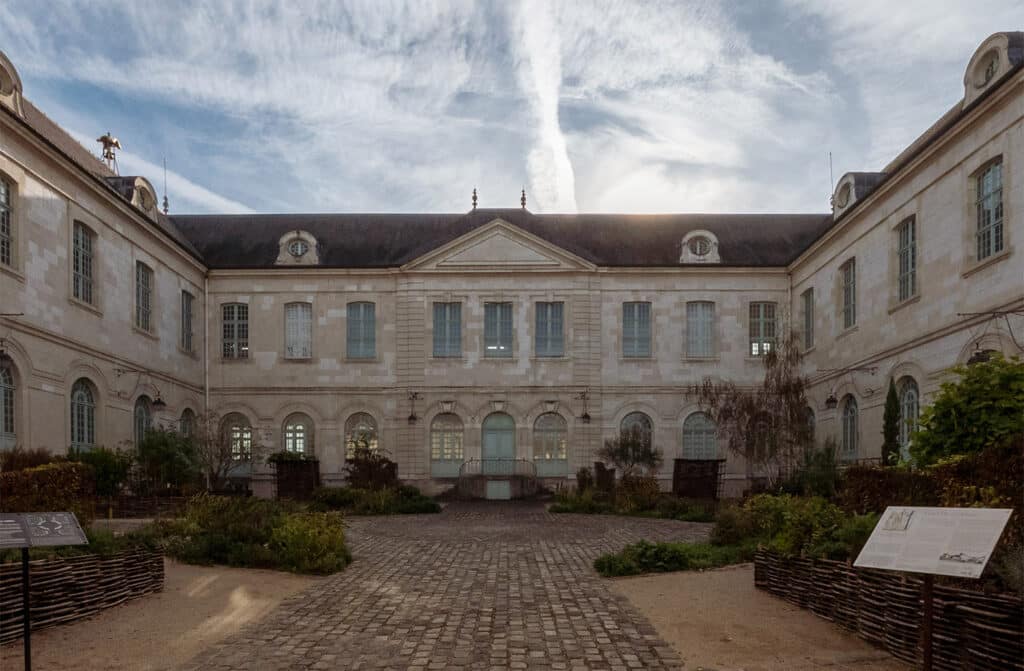
Supported by the department of Aube, this new cultural place aims to explain the art of stained glass and to present stained glass windows at eye level to observe the smallest details. The Cité du Vitrail was also imagined to be a gateway to the stained glass windows of Aube, by giving visitors the desire to discover the Stained Glass Route. At the time of my visit, at the beginning of November, the City was still under construction, here is an overview:
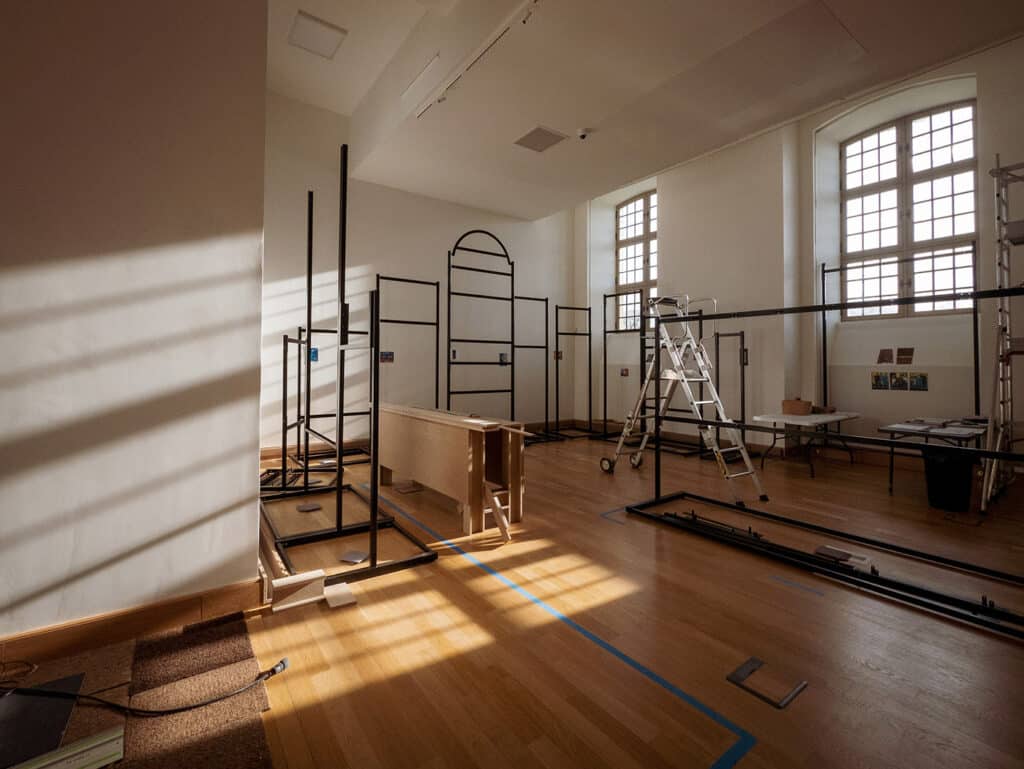
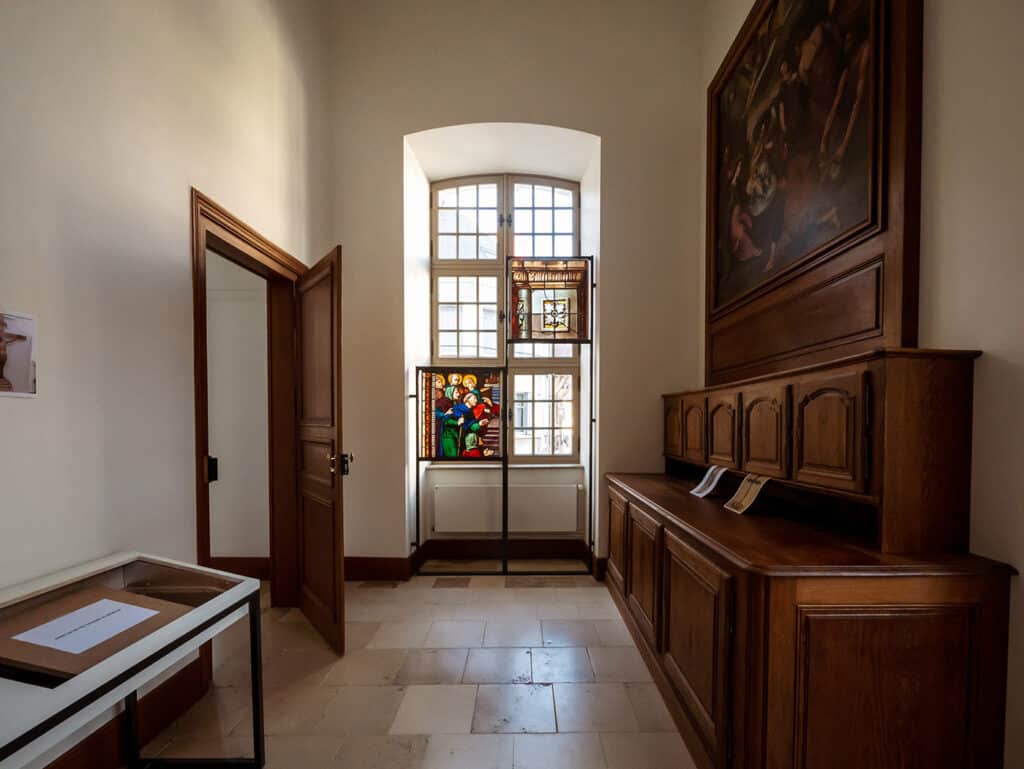
The chandelier, specially designed for the Cité by Alain Vinum, is 15 meters high!
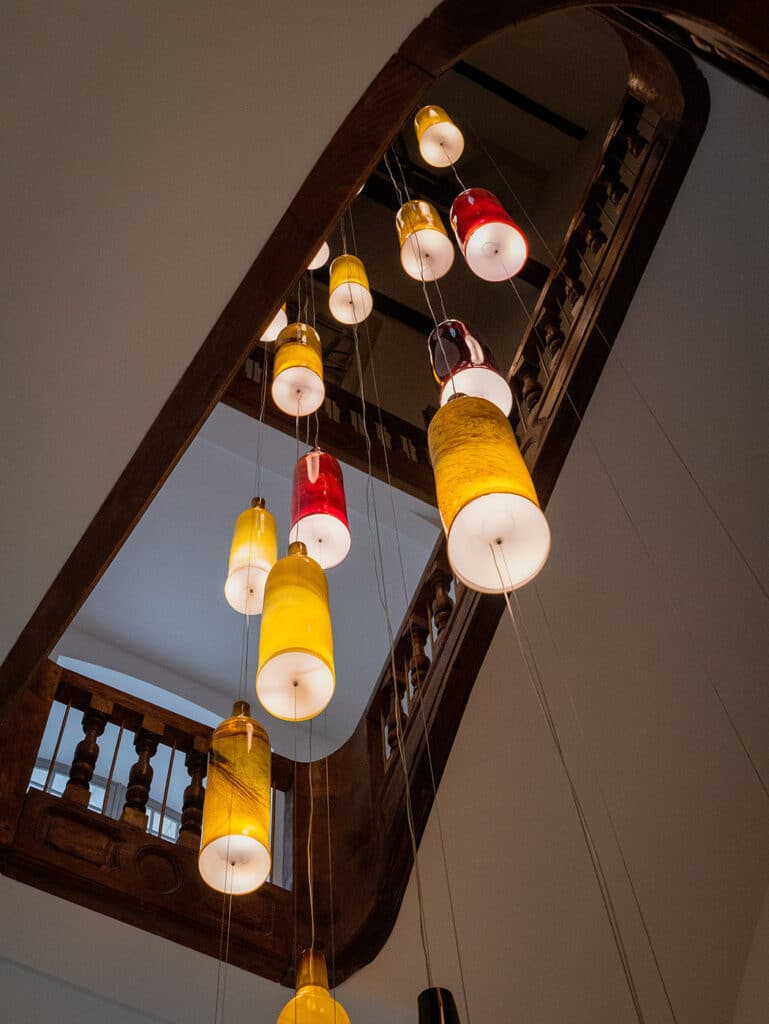
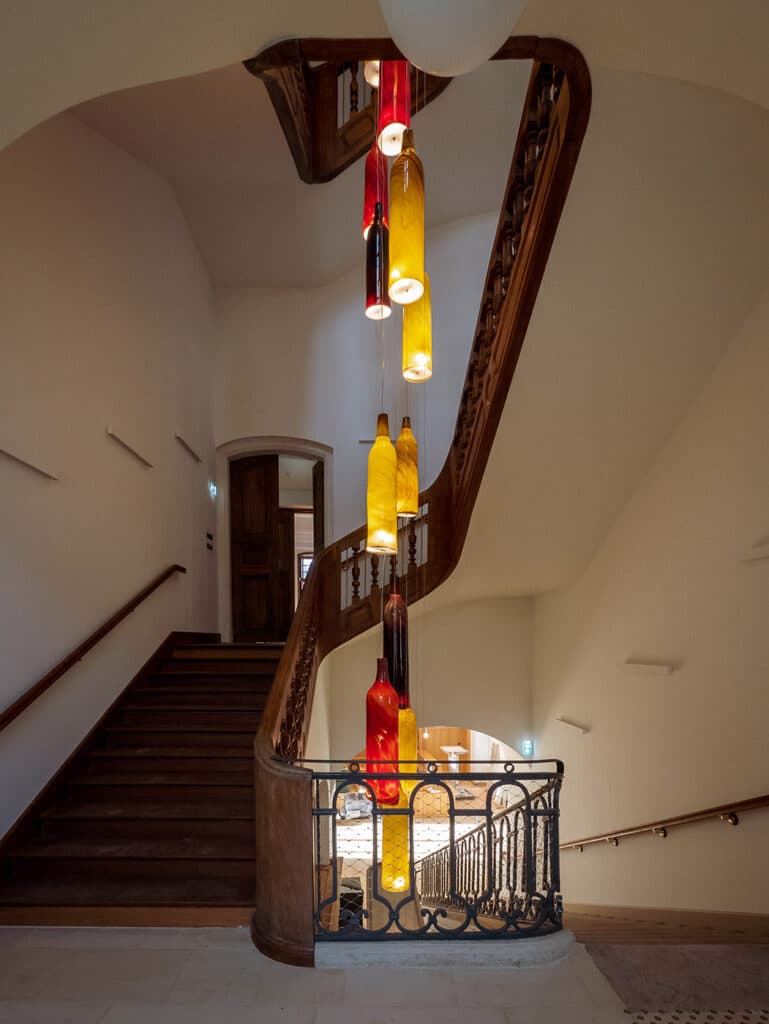

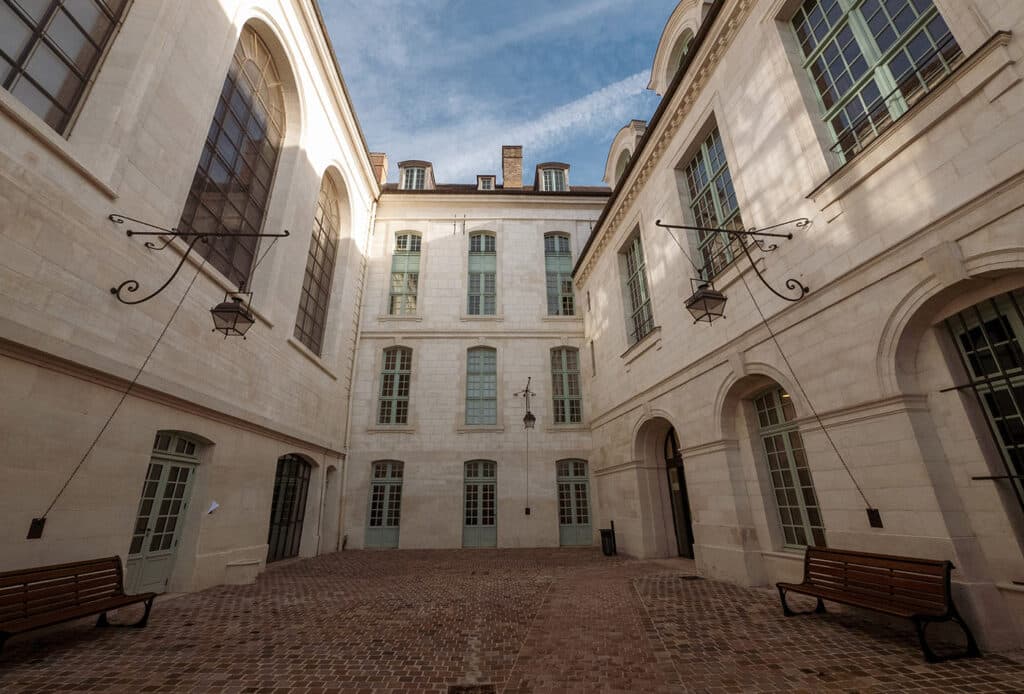
A visit to the Cité will also allow you to enjoy the magnificent architecture of the building, which includes one of the most beautiful apothecaries in France, as well as a chapel with 19th century decorations restored in 2021.
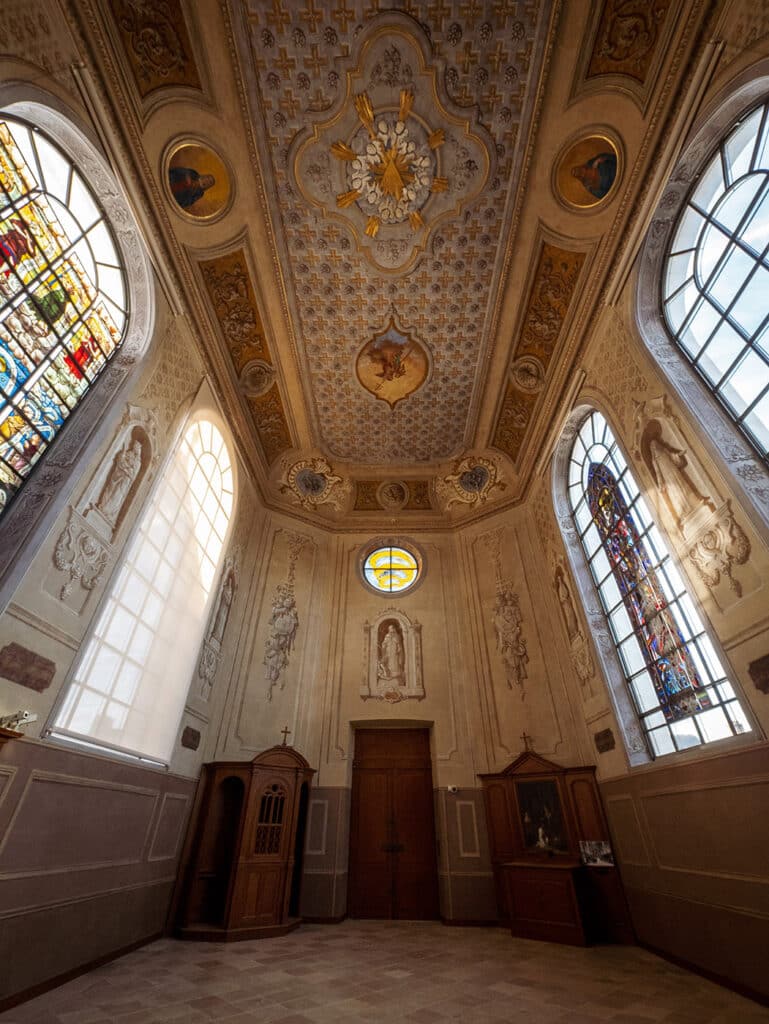
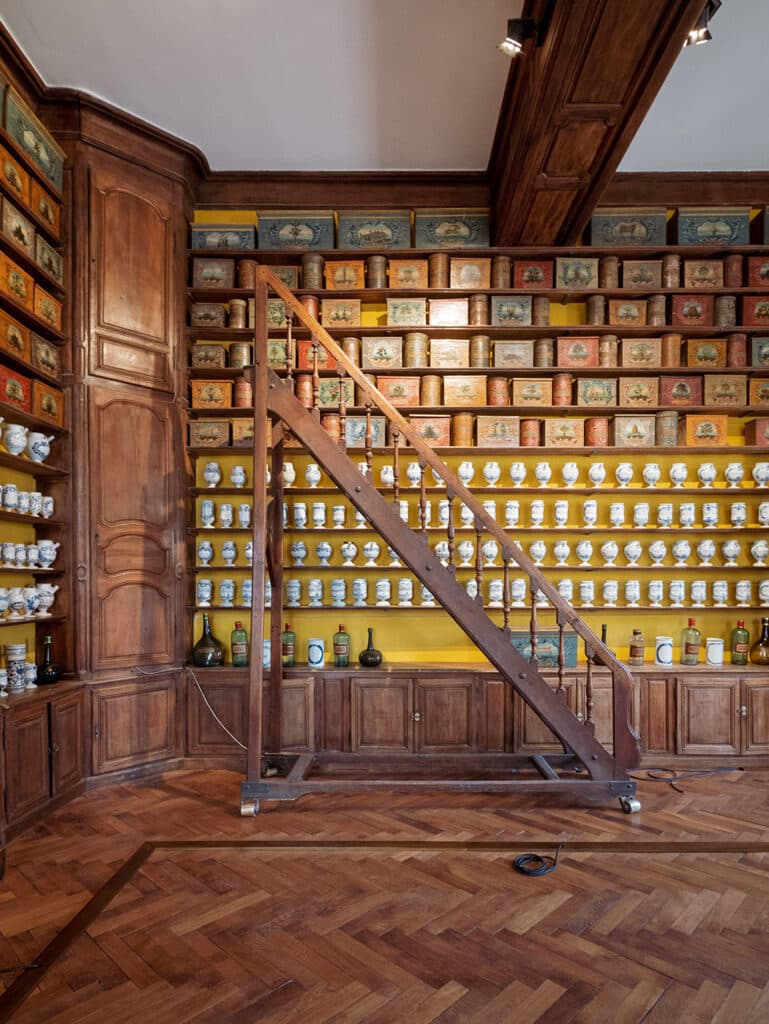
Did you know that?
You can find in the apothecary 80% of the ingredients of Harry Potter’s polynectar!
The garden of the Cité also offers a breathtaking view on the cathedral of Troyes.
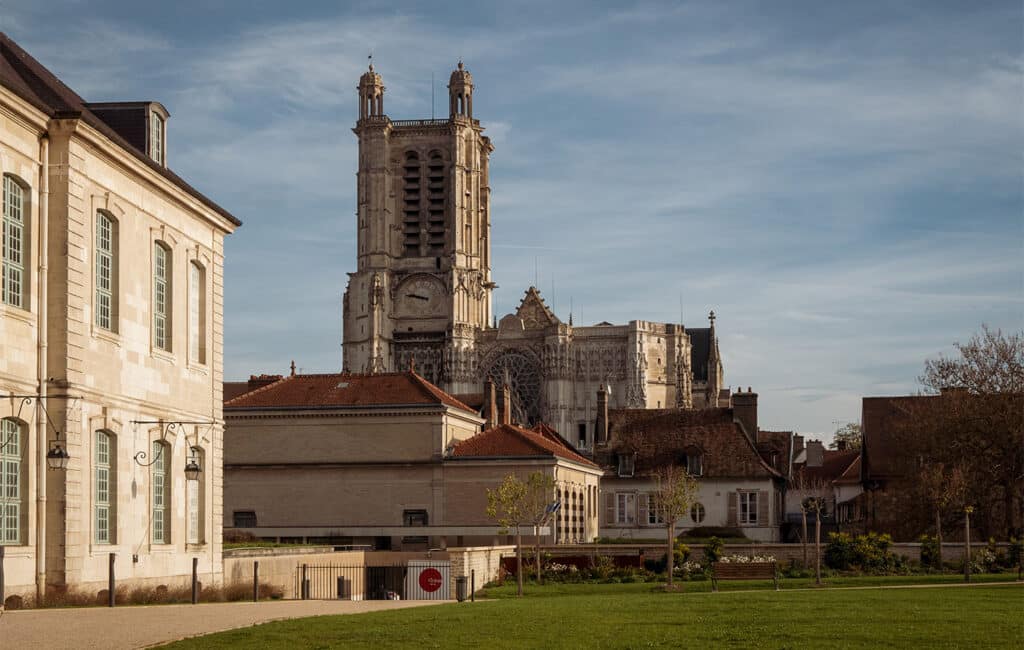
City of stained glass
Hôtel-Dieu-le-Comte, 31 quai des Comtes de Champagne, Troyes
https://cite-vitrail.fr/fr
Meeting the glass masters
In Aube, 150 bays have been created in the last 20 years, that is to say if this art is still very much alive! During my stay, I was able to meet two master glassmakers.
Anne Veyrier du Muraud
After having worked in large workshops, Anne Veyrier du Muraud decided to start her own business in order to realize more personal creations and to allow individuals to offer themselves a piece of stained glass. Her art objects, medallions and pendants can be found on her online store:
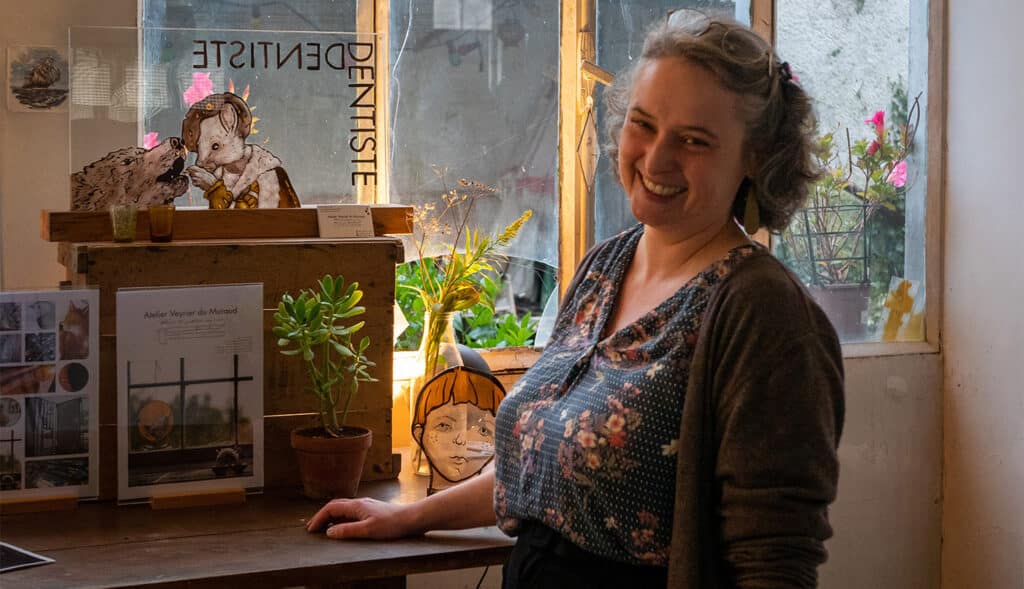
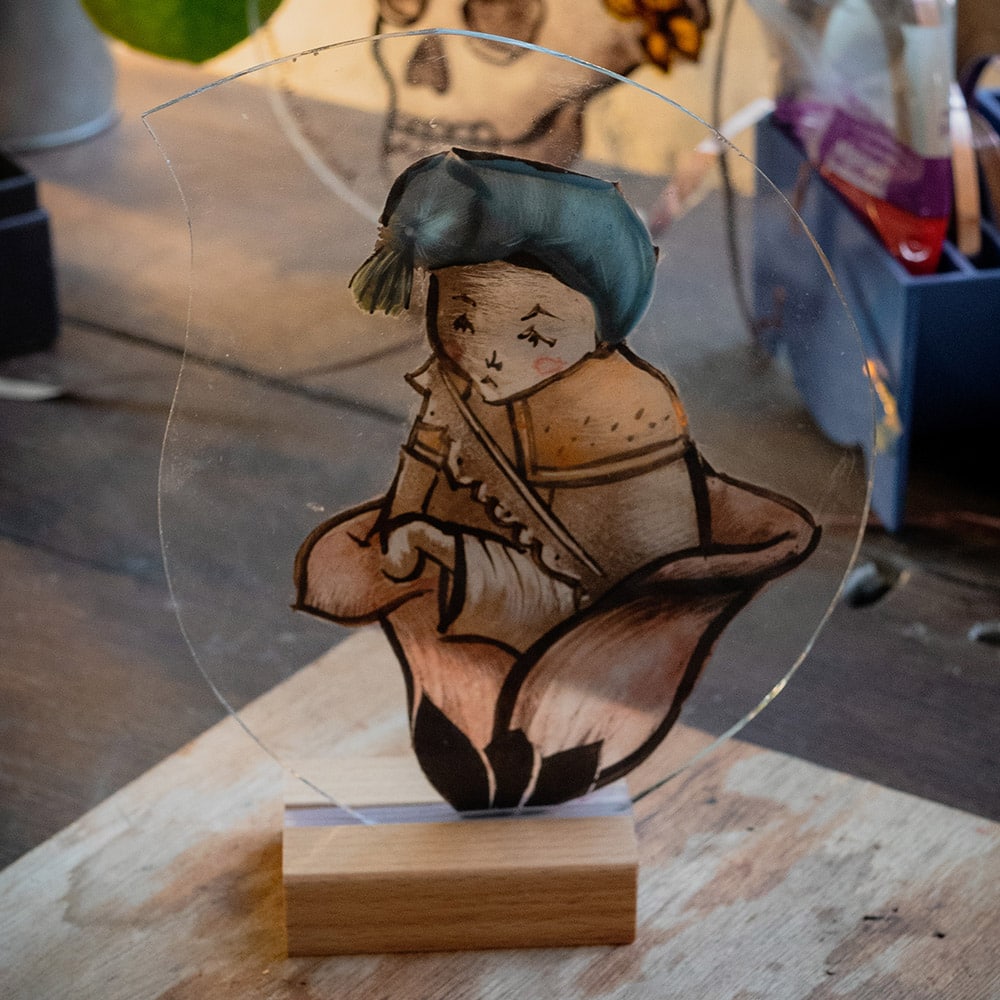
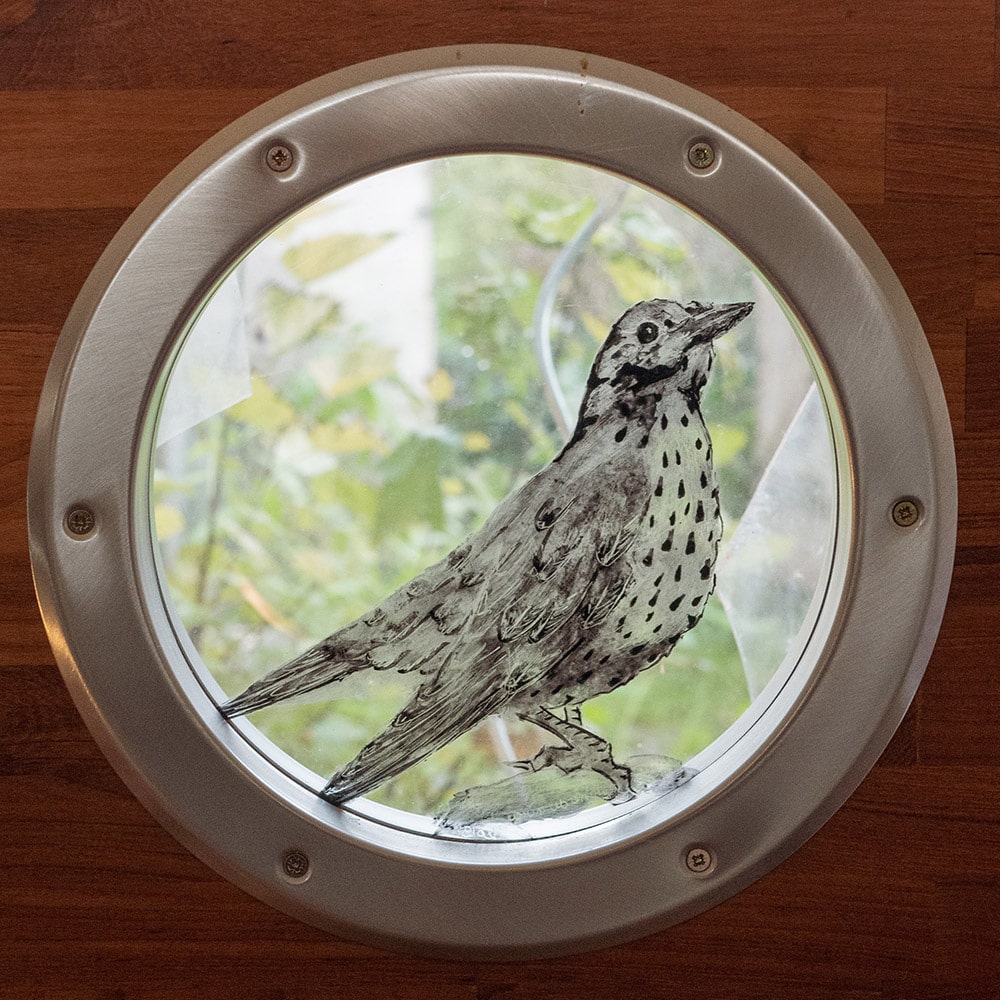
She also proposes workshops of initiation to the art of the stained glass for all the public (children, adults, families, companies…). Take advantage of your stay on the Stained Glass Route to meet Anne Veyrier du Muraud and learn more about the techniques of making stained glass:
Flavie Vincent-Petit
The Vincent-Petit workshop restores stained glass windows but also creates contemporary works. Currently, this workshop is working on the restoration of the stained glass windows of Notre-Dame de Paris.


But, if you read the beginning of this article, it is also to Flavie Vincent-Petit that we owe the stained glass windows of the churches of Nogent-sur-Seine, Eaux-Puiseaux or Ervy-le-Châtel.
“Stained glass is a mixture of transparency, opalescence and opacity, it is a language, it must be seen not as an image but as a filter.”
Discover the work of the Vincent-Petit workshop in this video :
Many thanks to Sandy Cadoux and Anouck Sittre for the organization of this stay, as well as to my guides and passionate transmitters of knowledge who helped make these few days in the Aube so interesting: Cécile Bertran, Lionel Seret, Jean-Claude Terrillon, Laurie Bazin, Anne Veyrier du Muraud, Fanny Portier, Sylvie Coulonval, Flavie Vincent-Petit, M. Jacquiet, Ambre Cnudde and M. Cure.
Article realized in partnership with Aube en Champagne and Explore Grand-Est

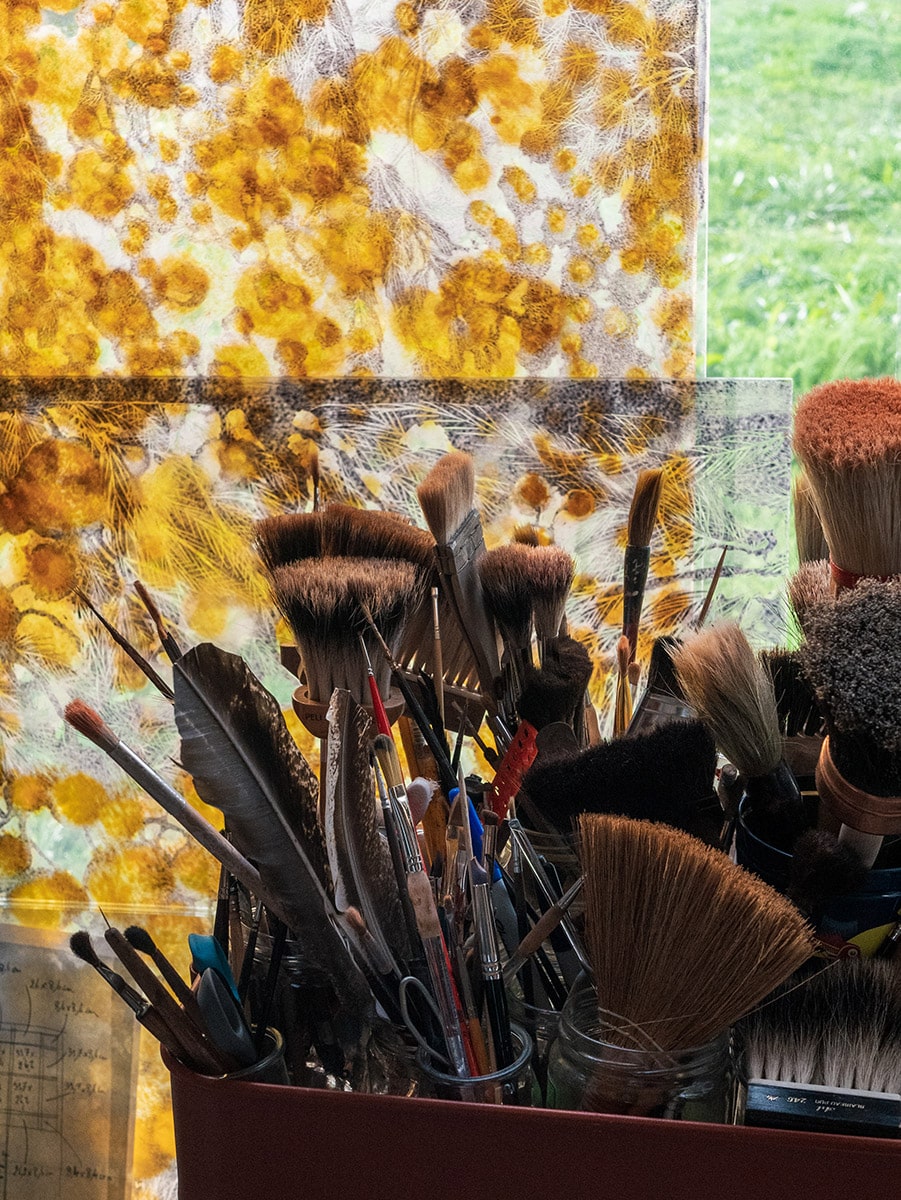



No Comments
Leave a comment Cancel